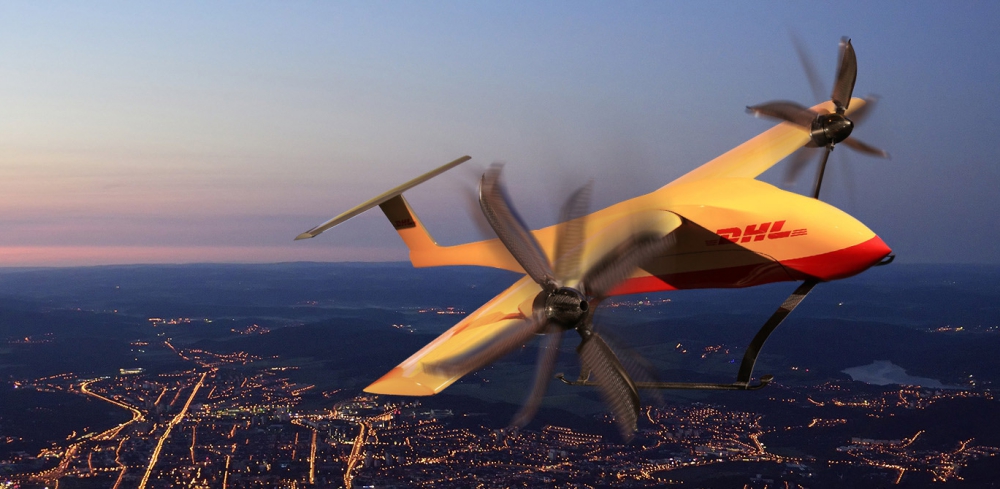DHL was the first parcel service provider in the world to directly integrate a parcelcopter logistically into its delivery chain but has reportedly discontinued the Parcelcopter project. In response to a question from WELT AM SONNTAG, DHL spokesman Alexander Edenhofer said: ” We are not continuing the parcel copter project .”
According to this , DHL will not continue a pilot project for sending medicines in Tanzania together with the German Federal Development Ministry. Although “important findings” have been gained, regular operation is no longer intended.
Recently Amazon triggered mass redundancies and transfers as it winds down a huge part of its UK drone delivery business.
In 2016, the company successfully concluded a three-month trial that saw its third-generation Parcelcopter make fully autonomous deliveries through the winds and snow of the Bavarian Alps for customers in two mountain communities.
This world first was made possible through systematic development and thorough testing of the technology – a large, long-term research and innovation project that was awarded the German Mobility Prize in 2016. Since its maiden flight in December 2013 – which saw the then ‘Quadrocopter’ transport a small parcel one kilometer from the east bank of the Rhine river to DHL’s corporate headquarters on the west bank – the Parcelcopter has been modified and optimized to overcome more challenging conditions in real delivery operations.
The first of such challenges came in the fourth quarter of 2014, when the Parcelcopter 2.0 was launched in a unique pilot project on the North Sea island of Juist. It was the first time that medications and other urgently needed goods were delivered over the open sea, and it was also the first time in Europe that a flight by an unmanned aircraft was operated outside the pilot’s field of vision in a real-life mission.
The Parcelcopter 2.0 had a longer range and was equipped to handle the wind and marine weather conditions of the North Sea. During the test, it made regular, 12-km flights from the mainland to Juist that were completely automated, though constantly monitored by a team on the ground. Traveling at an altitude of 50m and at speeds of up to 18m/s, the ‘copter mostly made express deliveries for a pharmacy during the week – and on weekends at times when alternatives such as ferries and flights were unavailable. The result: customers were able to fill prescriptions and receive urgent medication much faster than traditional delivery methods.
In the spring of 2016, the next generation demonstrated a giant leap in technology and capability. Now a tilt-wing aircraft (think miniature V-22 Osprey) and double the size of its predecessor, the Parcelcopter 3.0 is a fully autonomous UAV able to carry a payload of up to 2kg and travel at speeds of around 70 km/h. In a three-month trial, this state-of-the-art drone was successfully integrated into DHL’s parcel delivery business.
The feat was also made possible by another innovation: the ‘Parcelcopter Skyport’ – a fully automated parcel loading and unloading system based on DHL’s Packstation technology and developed specifically for this research project. Private customers in the Bavarian ski resort of Reit im Winkl and up on the Winklmoosalm mountain plateau were invited to test out the specially developed Packstations.
During the trial, they could simply insert their shipments into the Skyport to initiate automated shipment and delivery by Parcelcopter. All told, the drone made 130 trips from Reit im Winkl to Winklmoosalm, flying roughly 8km and up to 1,200m above sea level. The deliveries were made within eight minutes of take-off, a trip that takes 30 minutes by car in the winter.
Take a look at some other work in progress prototypes that are gunning to be the future of logistics and transport.
Ready for mainstream
At present, the Parcelcopter and the innovative Skyports are designed for delivering packages in hard to reach areas. Ultimately the aim is to provide a same-day drone delivery service in towns and cities. The Parcelcopter 3.0 has succeeded in realizing all the technical and process-based improvements required to carry out a field test in an urban area.
“With this combination of fully automated loading and unloading as well as an increased transport load and range of our Parcelcopter, we have achieved a level of technical and procedural maturity to eventually allow for field trials in urban areas,”
says Jürgen Gerdes, Management Board Member for Post, eCommerce – Parcel at Deutsche Post DHL Group.
One thing’s for sure: drone technology has a vital part to play in the future of logistics. The DHL Parcelcopter is an impressive proof of concept – a tangible technology that is today’s reality rather than a computer-generated vision of the future meant to deliver media hype.
“We are more than convinced that the parcelcopter has allowed us to create real added value in the field of logistics. In the future, this could take the shape of deliveries of emergency medical supplies or deliveries to regions situated in a challenging geographical location,” adds Gerdes. “The parcelcopter arguably allows us to offer people in such areas a new kind of access to the flexible and, most importantly, rapid dispatch and delivery of goods.”
In short: This flying postman is a real innovation in logistics and ready for the mainstream.

